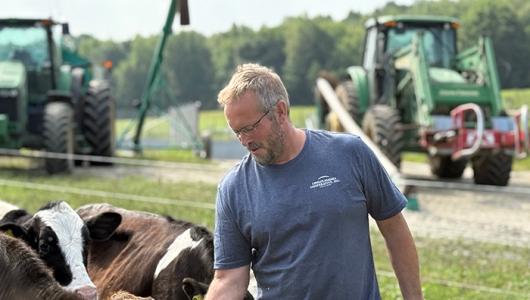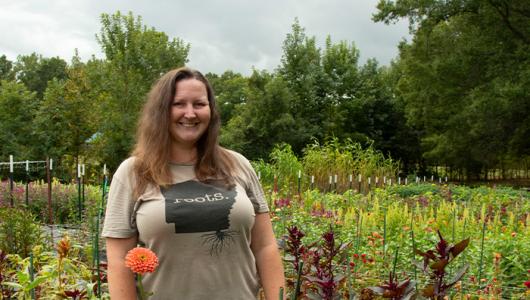Archived Content
This blog was published more than three years ago and is considered archived. It is not actively updated and may not reflect current policies or practices. However, some of the content may still be useful.
Did you know what’s good for bees, butterflies and other pollinators can also be good for your bottom line? Through a variety of USDA conservation programs, farmers and ranchers can manage for top-notch pollinator habitat while also improving their operations.
Three-fourths of the world's flowering plants depend on pollinators, such as bees, bats, beetles, and butterflies, to reproduce. Pollinators are critical to our food supply. More than 30 percent of the world’s food and flowering plants, including 130 fruits and vegetable plants, depend on insect pollination. Scientists credit insect pollinators for one out of every three bites of food eaten.
While pollinators are a critical foundation of our food chain, many species are in trouble. Pollinators face many challenges in the modern world. Habitat loss, disease, parasites and environmental contaminants have all contributed to the decline of many species of pollinators.
Honey bees and native bees are estimated to support $18 to $27 billion in crop yields each year in the United States.
You Can Help
Agricultural producers and private landowners can use conservation practices to help pollinators by creating and enhancing habitat and protecting this habitat from exposure to pesticides. Two-thirds of the land in the United States is privately owned, and the land management decisions of producers and landowners impact pollinators.
Good for the Farm
Honey bees and native bees are estimated to support $18 to $27 billion in crop yields each year in the United States. Pollinators play a key role in healthy agricultural landscapes, helping private landowners increase and improve the quality of their crop yields and the health and vigor of their landscape – which can lead to higher profits.
Those benefits motivate landowners’ investments in conservation to support pollinators because the same efforts that help benefit their operation also combats the threats to pollinators dwindling population.
Bruce Reynolds and Julie Hoffman manage for plant diversity on their Oklahoma ranch, which provides better food for cattle and pollinators. Watch this video about the Hoffman ranch.
Available USDA Assistance
USDA’s Natural Resources Conservation Service offers more than three dozen conservation practices that can benefit pollinators. While many of these practices may target improving grazing lands or reducing soil erosion, simple tweaks can yield big benefits for pollinator species.
For example, on croplands, farmers can integrate pollinator-friendly tweaks on their land, such as hedgerows and field borders. And on grazing lands, ranchers can manage for more diversity, which provides top-notch forage for livestock and habitat for pollinators.
Good pollinator habitat consists of healthy stands of high-value pollen and nectar plants. Some pollinators have additional habitat needs, including caterpillar host plants for butterflies, and nest sites and overwintering areas for native bees.
NRCS conservationists and wildlife biologists as well as conservation partners like Xerces offer technical assistance to help producers develop a conservation plan and select which conservation practices are the best fit for their land. The Environmental Quality Incentives Program, Conservation Stewardship Program and Agricultural Conservation Easement Program can provide financial assistance to help cover the cost of implementing those practices.
Meanwhile, USDA’s Farm Service Agency – through the Conservation Reserve Program -- helps farmers who want to convert highly erodible cropland or other environmentally sensitive acreage to native landscapes by planting native grasses, wildlife plantings, trees, filter strips or riparian buffers.
USDA has a wide variety of options for landowners wanting to improve pollinator habitat on their land while improving the bottom line of their operation.
Learn More
Applications for assistance are reviewed, ranked and funded several times per year. Contact your local USDA service center to learn more about these programs. You can also learn more by visiting nrcs.usda.gov/pollinators as well as visiting our multimedia story, “Working Lands for Monarch Butterflies.”


